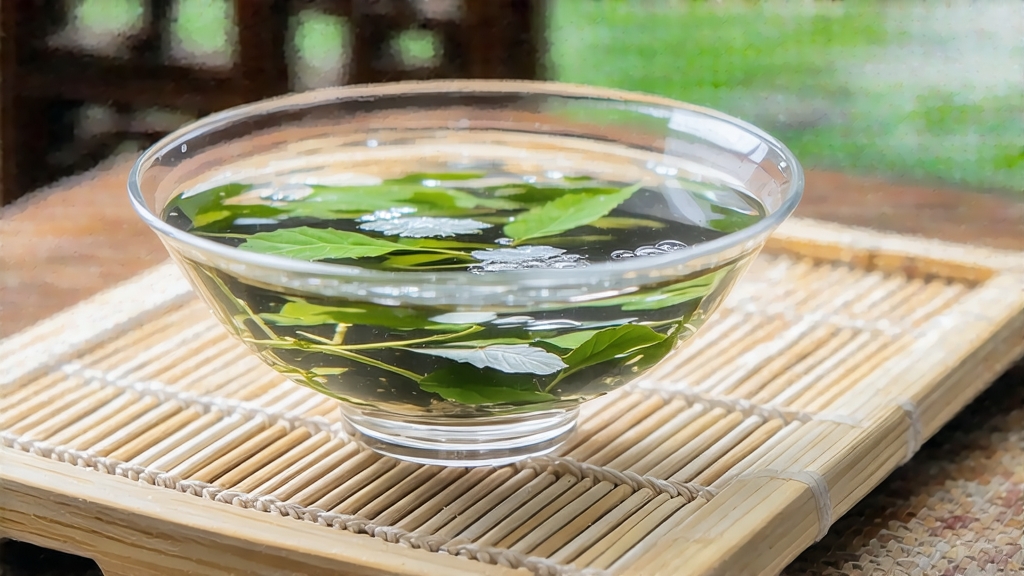
Among the six great families of Chinese tea, white tea is the least theatrical yet the most haunting. It is the tea that whispers rather than declaims, and within this whisper the highest, most crystalline note belongs to Bai Hao Yin Zhen—literally “White Hair Silver Needle.” To the eye it is a bundle of slender, ivory-colored spears, each tip cloaked in a downy aurora that looks like frost caught in moonlight. To the palate it is a cool glide of honeyed air, a memory of melon rind and mountain springwater that arrives long after the cup is empty. International drinkers who meet it for the first time often say, “I did not know tea could taste like this—like almost nothing, yet everything.”
Historical roots
White tea’s documented history begins in the Song dynasty (960-1279), when the imperial court demanded “tribute cakes” pressed from the palest buds of Fujian. Yet the loose-needle style we now call Yin Zhen only stabilised during the late Qing, when export houses in Fuzhou recognised that foreign buyers would pay a premium for intact, unopened buds that could survive the long sea journey to Europe. By 1891 Silver Needle was appearing in London catalogues priced above many first-flush Darjeelings, marketed poetically as “Chinese Down.” Republican-era growers refined the plucking standard to the present rule: only the unopened bud, and only between the Qingming and Grain Rain micro-seasons when the spring qi is deemed most balanced. Thus a tea that began as imperial vanity became a quiet diplomat, crossing oceans while China itself was in tumult.
Terroir and micro-climate
Authentic Bai Hao Yin Zhen is produced in two contiguous protected zones: Fuding in northeast Fujian and Zhenghe in the interior mountains. Fuding’s red granitic soils are porous, forcing roots to dive deep for minerals; the coastal mist lowers UV stress, encouraging the plant to store theanine rather than bitter polyphenols. Zhenghe sits 200 m higher, giving cooler nights that slow respiration and lock in fragrance. Within each county the best gardens occupy shady northern slopes at 400–700 m where the diurnal swing can exceed 10 °C. Locals speak of “three small climates in one mile,” and indeed a needle from Taimu Mountain carries a lilac note absent in the slightly stonier profiles of Zhenghe.
Plucking ritual
The harvest window lasts barely ten days. At dawn, when the mountain dew still weighs 3 % of the bud’s mass, pickers slide tiny cane baskets onto their forearms; metal is forbidden because it bruises the cell walls and encourages oxidation. The standard is ruthless: bud length 2.5–3 cm, weight 0.3 g, sheath unopened, no purple anthocyanin tinge, no insect bite. A skilled picker gathers barely 500 g of fresh buds per hour; 30 000 buds—an entire day’s work for five people—yield only 500 g of finished tea.
Withering: the art of doing almost nothing
Once back at the shed, the buds are spread one layer thick on bamboo trays woven from two-year-old mao zhu. The first four hours are “green withering,” when the leaf moisture drops from 75 % to about 65 % and the grassy volatiles escape. Trays are then stacked on racks in a shaded corridor where gentle mountain cross-draft carries away moisture without coaxing oxidation. Temperature is never allowed above 32 °C; above that, enzymes rush and the tea tips toward black. On the second night, if the moon is bright and humidity dips below 65 %, the trays are moved outside for “moon withering,” a poetic but biochemically grounded step: UV moonlight triggers limited cis-3-hexenol conversion, adding a faint cucumber coolness. By dawn of the third day the moisture has fallen to 10–12 %, and the leaf feels cool and leathery—ready for the charcoal finish.
Low-temperature bake
Unlike green tea’s kill-green, white tea is merely “baked to peace.” Traditionally, a small basket of buds is placed 30 cm above a pit of dim charcoal drawn from longan wood. The firekeeper’s palm must tolerate the heat for five seconds—any hotter and